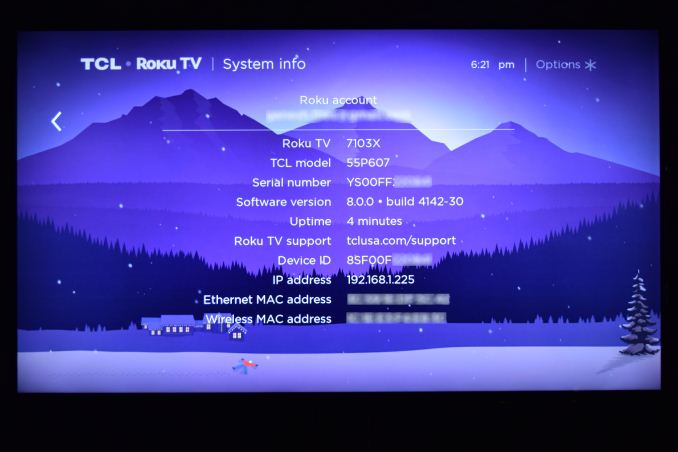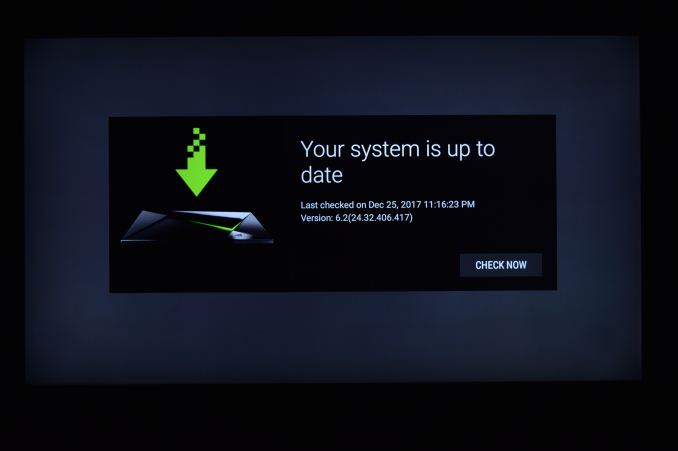A Budget Home Theater & PC Setup: 4K, HDR, UHD Blu-ray, and More
by Ganesh T S on December 26, 2017 8:30 AM ESTEvaluating Display Sources: HTPCs & CE Devices
Home Theater PCs used to be bulky versatile machines that had to support built-in TV tuners, a number of hard disks, as well as optical drives. However, the rising popularity of network TV tuners, network-attached storage (NAS) devices, and OTT streaming have resulted in the a transformation of the functionality that people expect from HTPCs. Simply put, a modern-day HTPC needs to be a flexible and versatile media player capable of handling a multitude of codecs and DRM requirements. The latter is not restricted to the handling of the encoded video. The display output also needs to be secure, while providing enough bandwidth and features to take full advantage of the capabilities of the downstream devices in the setup.
The average consumer often finds the 'it just works' nature of consumer electronic (CE) equipment such as the Roku streamers, game consoles, and standalone Blu-ray players to be attractive. However, for power users, the flexibility of HTPCs (such as the ability to support arcane subtitle formats or specific container features such as MKV chapters, or, even serve as a gaming machine) is simply too much to give up. Certain CE devices such as the NVIDIA SHIELD Android TV STB attempt to offer the best of both worlds. However, they are still closed platforms, and often do not have enough horsepower to fall back upon software decode for unsupported codecs.
Despite my predilection for HTPCs, I wanted to bring out the pros and cons of other closed solutions. Towards this, the evaluation of various options for media playback / display sources addresses the following aspects:
- HDR Support
- OTT Streaming (YouTube and Netflix)
- Local Media Playback (via USB)
- UHD Blu-ray Playback with HDR
The first candidate is the TCL 55P607's built-in Roku platform. Our tests were processed with the TV connected to the network using its wired 10 / 100 Mbps interface and Wi-Fi disabled. Firmware version 8.0.0 4142-30 was used.
The second solution in our evaluation set is one of the most popular Android TV STBs in the market - the NVIDIA SHIELD Android TV (SATV). Despite having launched back in 2015, the combination of high-end hardware and regular firmware updates have kept it at the top of the media player / Android TV STB market. Our tests were processed with the SHEILD connected to the network using its wired 1 Gbps interface and Wi-Fi disabled. Firmware version 6.2 was used.
The use of a RF remote / controller, combined with IP control using a smartphone app, mean that the SHIELD can be safely tucked away out of sight in a home theater setup.
Moving on to the HTPC front, we have three different PCs, with configurations and driver versions listed in the table below.
| Compact Home Theater PC Candidates - 2017 | |||
| PC | Zotac ZBOX MAGNUS EN1080K | ASRock Beebox-S 7200U | Intel NUC7i7BNHX1 |
| CPU | Intel Core i7-7700 | Intel Core i5-7200U | Intel Core i7-7567U |
| GPU | NVIDIA GTX 1080 (8GB GDDR5X) | Intel HD Graphics 620 | Intel Iris Graphics 650 |
| RAM | Corsair Vengeance 2x16GB DDR4-2667 SODIMM | Micron 16ATF1G64HZ 2x8GB DDR4-2133 SODIMM | Crucial Ballistix Sport LT 2x16GB DDR4-2400 SODIMM |
| Storage | Toshiba OCZ RD400 (512GB) | Kingston SSD Now V+ SNV325S2 (128GB) | Samsung SSD 840 EVO (500GB) + Intel Optane (16GB) |
| BIOS | 2K170814 | 1.73 | BNKBL357.86A.0054 |
| GPU Driver | 388.31 | 4877+ (beta) | 4877+ (beta) |
| Specifications | Zotac ZBOX MAGNUS EN1080K Specifications | ASRock Beebox-S 7200U Specifications | Intel NUC7i7BNHX1 Specifications |
| Pricing (NOT as configured) | USD 2000 (with 120GB SSD, 1TB HDD, 8GB RAM, and Windows 10) | USD 349 (Barebones) | USD 506 (Barebones) |
Note that we are using a beta driver from Intel that will be released to the public in January 2018. The reason behind the use of this driver will be apparent in our UHD Blu-ray Playback section.
Windows 10 Fall Creators Update was used as the OS for all the tests done using the above PCs. This version is critical for cutting-edge HTPC functionality, as it brings HDR desktop and media payback support into the stable release channel.













191 Comments
View All Comments
stony.sk8 - Wednesday, September 19, 2018 - link
good day, based on this review I bought Intel NUC7i7BNHX1 with HyperX Impact 8GB DDR4. when I turn on windows 10 HDR so Warcraft (2016) 4K UltraHD BluRay (x265 HEVC 10bit) seka. when I turn it off everything goes but sometimes it snaps too, but it is not terrible. I play it on power dvd 18. Own oled tv 65b7.The question is when I'm going HDR in the win and I'll run this fil-it'll be with hdr? and what is it about hdr in win? I do not accept that the pc would not do it. thanks for the reply